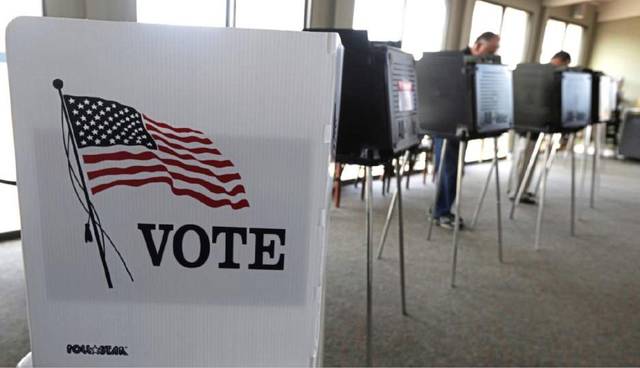https://triblive.com/opinion/editorial-is-cutting-polls-smart-in-pandemic/
Editorial: Is cutting polls smart in pandemic?

As a nation, we spend a lot of time telling people to get out and vote. As a news organization, we do, too.
We want people to be informed about issues, aware of implications and prepared for the decisions they are about to make. But more than anything, we want them to care about what is happening enough to make the effort to participate in the process.
So the steps leading up to this year’s primary election have been followed carefully.
The state made the right call last month by moving the election from April 28 to June 2. Weeks later, Pennsylvania is still locked down by the pandemic, and the number of coronavirus patients and deaths continue to rise — albeit more slowly now.
How can we encourage people to stay home and tell them to come to the polls at the same time? It just doesn’t work.
Allegheny County made a smart and proactive move last week in deciding to send mail-in ballot forms to every registered voter. It makes it possible for voters to do their civic duty without leaving the house, and not leaving the house has been the refrain.
Not every county is doing this, but Gov. Tom Wolf is pushing the idea, too. His administration is sending postcards and mounting advertising campaigns promoting mail-in voting, and as of this week, more than 462,000 voters had applied for the ballots, according to the Associated Press.
That makes it unfortunate that Allegheny County is following up its smart move with one that seems poorly considered.
The Legislature voted in March to allow counties to consolidate polling places by 60%. Wolf signed that into law.
But Allegheny, the second-largest county in Pennsylvania, wants to go further than that. The county Board of Elections voted Thursday to reduce about 1,300 polling places down to fewer than 200. That shrinks them by more than 85% and would require approval by the Pennsylvania Department of State.
It makes sense that fewer polling places are needed if the county’s voters take advantage of the mail-in opportunity. But if they don’t, does it put more of them at risk?
Consolidating the polls means putting more voters into one location, increasing lines and waits and exposure.
It is understandable that the county wants to reduce the number of poll workers for election day. With five or six per precinct, that is thousands of workers to consider, and kudos to the board for making those workers’ welfare a priority.
But Pew Research Center puts the national voter population for 2020 at the oldest ever, and Pennsylvania has an aging population. Older voters are among the most consistent to show up to vote. Coronavirus is most threatening to those who are older and have health problems.
Maybe finding a way to cut back or supplement poll workers in each precinct would be a smarter way to maintain social distancing while still encouraging people to vote.
Copyright ©2025— Trib Total Media, LLC (TribLIVE.com)
